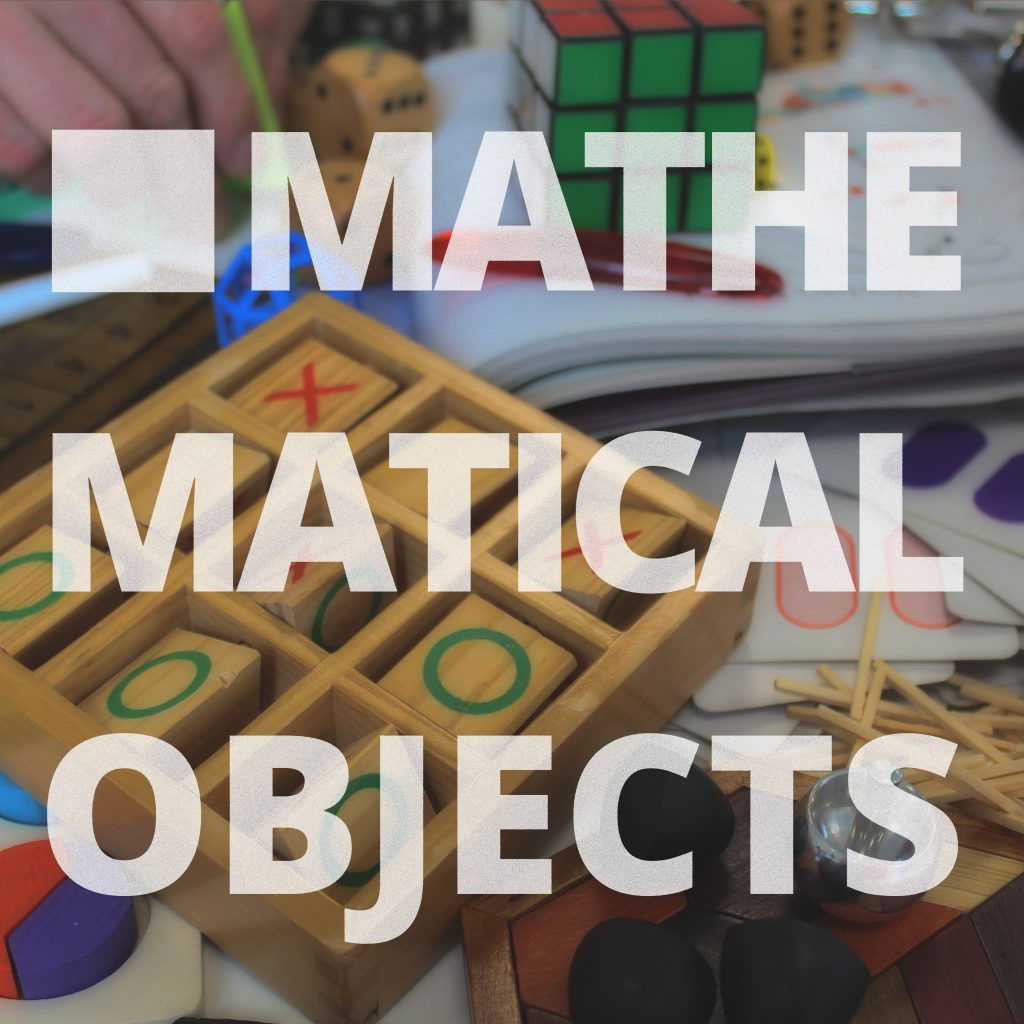In this series of posts, we’ll be featuring mathematical podcasts from all over the internet, by speaking to the creators of the podcast and asking them about what they do.
We spoke to… ourselves, since we run a podcast here and realised we haven’t done one of these posts about it! Katie and Peter are currently in their third season of fortnightly episodes, with plenty more to come.

Podcast title: Mathematical Objects
Website: aperiodical.com
Links: Android – Google Podcasts – RSS – Twitter
Average episode length: 10-20 minutes
Recommended episode: Acoustic Mirrors with special guest James Grime
What is your podcast about?
Each episode of Mathematical Objects is essentially a conversation about mathematics inspired by a particular object. The object can be real or abstract, and doesn’t itself have to be mathematical, but we try to use it as a good excuse to talk about interesting maths that we know enough about to be able to explain. Sometimes we have a guest, who brings an object and some mathematical chat.
How did you get the idea for the podcast?
Katie’s lectureship at the same university as Peter meant that we were in the same place on a fairly regular basis for a while, and we realised that having podcasted together before (on Taking Maths Further, and variously otherwise) we could take the opportunity to put together some short chats. Since lockdown, we’ve been recording remotely – which has also made it easier to bring on more special guests.
Who is the intended audience for the podcast?
We hope it’s suitable for most people – we try to explain anything complicated that comes up, but generally we’re assuming that our listeners are the kind of people who would voluntarily choose to listen to a maths podcast. We’ve seen some great responses from listeners who’ve been inspired by episodes of the podcast to do maths activities with their kids, and that’s great to see.
Why should people listen? Why is it different to other mathematical podcasts?
We try to keep the episodes fairly short, which means they’re easy to listen to in amongst doing other things. Otherwise, we hope they’re just an interesting introduction to a topic, which you can use as a springboard to investigate things more thoroughly for yourself and learn about some of the maths behind objects in the world around us.
What are some highlights of the podcast so far?
There are some episodes covering objects you might expect to see, such as the Rubik’s Cube, and others covering objects you might not think are mathematical, like a pair of skipping ropes. We’ve had a few special guests on previous series, including Alex Corner talking about Tantrix, juggling and beaded necklaces, and Christian showing us his correntator; for this series, so far we’ve talked about mandalas with Hana Ayoob and acoustic mirrors with James Grime. We’ve also done plenty of episodes without guests, including one on Number Blocks and how Peter’s 5-year-old enjoys developing his number sense with them.
What exciting plans do you have for the future?
The rest of the current series includes several more special guest episodes, as well as some episodes which follow on from and build on one another, which gives us the chance to tell longer and more detailed stories. We’re also planning to run the fourth series immediately after the third, which means people can keep listening every fortnight through until Christmas!